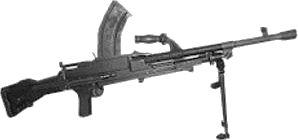- 01: Introduction
- 02: History
- 03: Propellants, Firearms, and Ammunition Development
- 04: Modern Firearms Manufacture
- 05: Small Arms Ammunition
- 06: Evidence Handling Procedures
- 07: Equipment and Instrumentation
- 08: Examination of Firearms
- 09: Cartridge and Shotshell Examination
- 10: Characterization and Evaluation of Fired Projectiles
- 11: Bullet Comparison and Identification
- 12: Gunshot Residue and Distance Determination
- 13: Toolmark Identification
- 14: Communicating Results
- Resources


Case Design
Home > Propellants, Firearms, and Ammunition Development > Ammunition > Cartridge Cases > Case Design
The basic shape of the cartridge case is linked to firearms evolution and development. Most early cartridge cases were straight walled, which was the optimum shape for use with black powder. Protruding rims at the rear positioned the case in the chamber and provided the support needed to prevent the firing pin blow from driving the case deeper into the chamber. The rim also allowed the extractor to grasp and withdraw a fired case from the chamber. This design was successful for single-shot arms, shotguns, and repeating arms with tubular magazines.
Eliminating the protruding rim was key to box magazine success. The simpler box magazine was less expensive to produce because the complex feed parts (required in tubular magazines) were eliminated.

The machine gun shown is chambered for a rimmed cartridge, the 303 British
Removing the rim required that
- the case provide positive support for proper positioning,
- the case resist the firing pin blow,
- some gripping surface be provided for the extractor.

Bottlenecked case
Getting the required positive support relied on other features of the case. Some straight-wall or straight-taper cases (e.g., .30 U.S. Carbine,
.45 Auto) use the case mouth to support the cartridge. Larger cartridges were bottlenecked and the sloping shoulder became the support point. Some bottlenecked cases did not have enough shoulder for support. In another variation, the British firm of Holland & Holland developed the belted case; a small ring placed forward of the extractor groove supported the case.

Rimless belted case
The gripping surface was provided by designing a rimless case. Although the rim is present, it does not protrude beyond the body of the case. The extractor groove is an undercut made in the solid portion of the case in front of the rim.




